Pictures from the reactors exercise

As a part of the CMI funded Web Based Teaching Project we have constructed and built an experimental rig with a chemical reactor. It was used for the first time during Lent term 2006 as part of an exercise on non ideal reactors.
To compare an ideal and non ideal reactor model, the students operated a chemical reactor using a SIMATIC PCS7 Operating System donated by Siemens Automation Cooperates with Education (SCE).
Below you find a few photographs taken during the exercise.
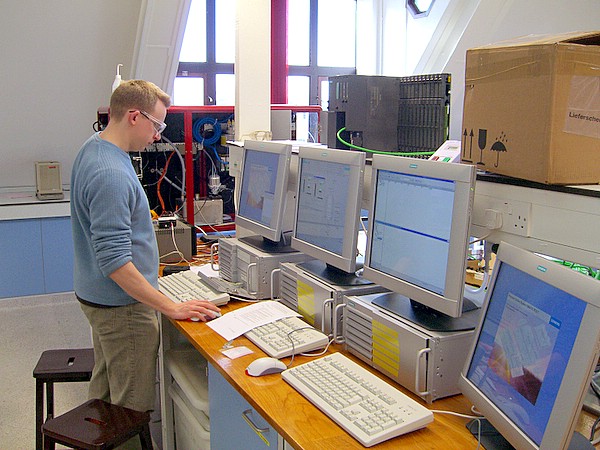 |
Teaching Consortium Teaching Fellow Mike Goodson checks that everything is set up and ready to go for the students to perform ther experiment.
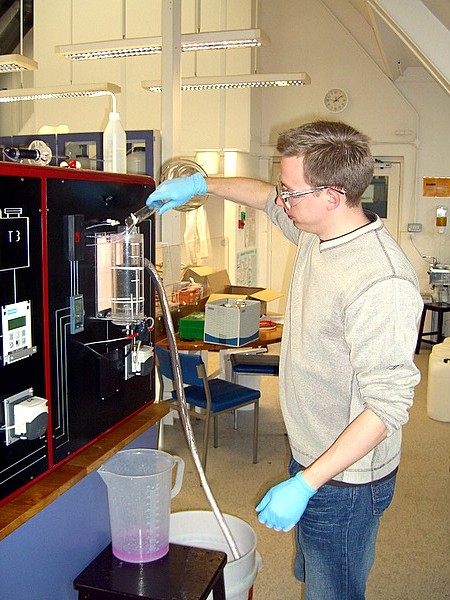 |
Mike Goodson tops up the reactor and prepare it for running before the experimental session.
 |
Everything on the experimental rig can be controlled via the Siemens operating system.
 |
When Sodium Hydroxide reacts with Phenolphthalein a pink product is formed. This reacts further to a colourless product and hence the reaction conversion can be monitored by a spectrometer attached to a flow cell. Please note the dead zone at the bottom of the reactor.
 |
The students try models based on the assumption of an ideal reactor and also with a bypass and dead volume model.
 |
The operating station with the Siemens SIMATIC PCS7 Operating System and the S7-400 Programmable Logical Controller.
 |
Mike Goodson explaining the theory behind the bypass and dead volume model.
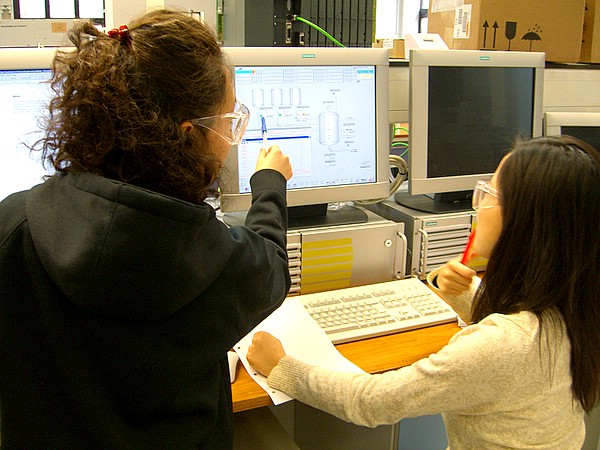 |
Pump number one is the Sodium Hydroxide.
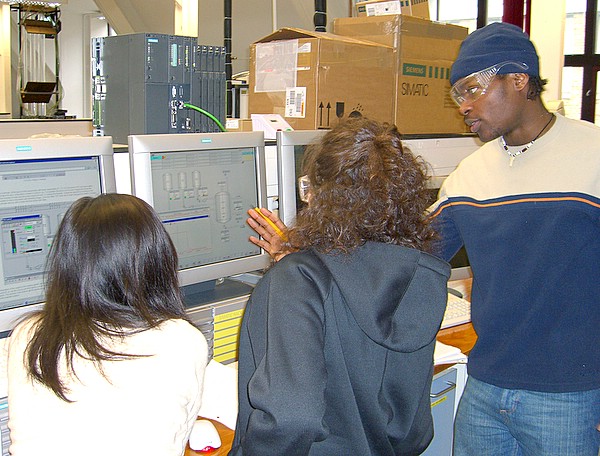 |
Not all the features of the operating system are used for this assignment.
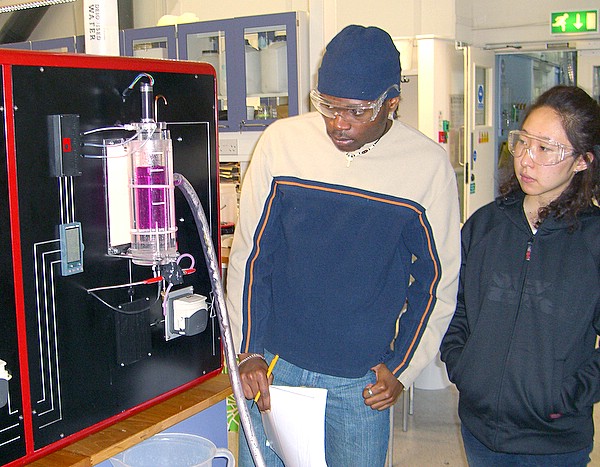 |
The size of the dead zone decreases during the experiment but it does not disappear completely.
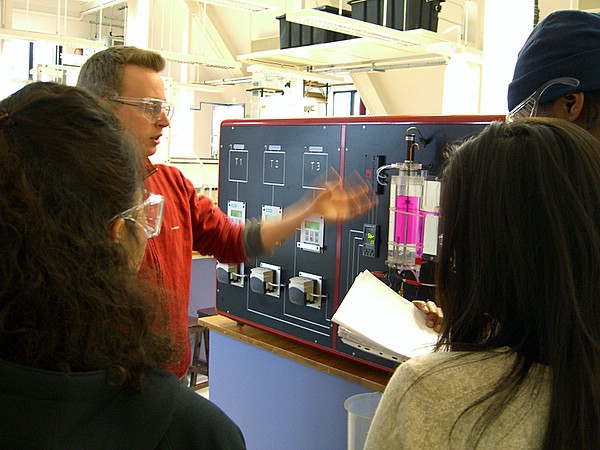 |
Mike Goodson explaining the experimental setup.



